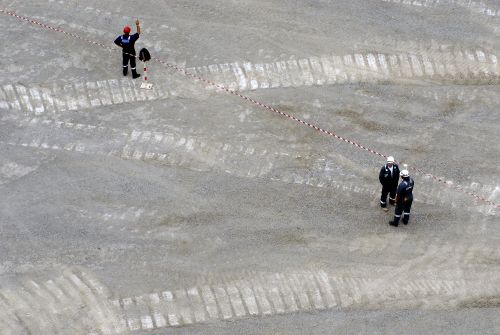879

The first semester of 2023 concluded with real estate investments in Romania totaling 168 million euros, nearly half compared to the previous year, with transactions in the industrial and logistic segment representing about 36% of the total, and those in the office segment accounting for approximately 31%, according to the market report by Colliers for the first half of the year.
This weak result comes as no surprise to Colliers consultants, who estimated earlier in the year that the transaction portfolio would slow down compared to the exceptional years of 2021 and 2022, given the already challenging transaction finalization environment.
They assess that the outlook remains mixed, explaining that while there is more clarity regarding inflation, this does not necessarily mean more clarity regarding financing interest rates and the perception of risk.
The largest transaction of the year was the sale-and-leaseback deal of FM Logistic's warehouses, a 3PL operator with a portfolio of approximately 100,000 square meters in multiple cities, bought by CTP, the local market leader in industrial and logistics spaces. The value was not publicly disclosed but was estimated to be around 60 million euros. Colliers consultants note that, in contrast to other sectors, completing transactions with industrial spaces is predominantly hindered by the lack of assets available for sale, as most developers tend to be long-term owners.
Regarding the level of transactions, only this industrial category transaction represented approximately 36% of the total volume in the first half.
Offices also remained an important asset class, attracting transactions accounting for 31% of the total volume in the first half of 2023, while retail generated approximately 23% of the turnover, and hotels nearly 11%.
The consistent increase in rents, mainly influenced by the inflation rate but, in the case of industrial spaces, also by the transition to an owner's market, contributed to some extent to limiting yield growth pressures.
With an all-in financing cost of over 5.5% in the CEE region, mainly determined by the rise in rates in the money market (3-month Euribor increased from -0.6% at the end of 2021 to over 3.7% in August 2023), the cost of money is the most relevant aspect in the context of yield growth. This is because Romanian banks remain open to financing transactions, as long as the buyer is comfortable with these rates. On another note, Colliers consultants observe a clear preference for high-quality assets that generate and align with ESG standards.
Furthermore, several large transactions are in various stages and could be concluded in the second half of the year, which could bring the total volume for the year to 500-600 million euros, approximately half of the 1.2 billion euros recorded last year.
Retail-generated volumes should be somewhat higher than in previous years, considering that major transactions may be concluded in the coming period, according to Colliers consultants, who emphasize that in the context of fewer office transactions, this would be a more balanced year overall.
Such expectations need to be constantly calibrated, though, says the Colliers expert, adding that major central banks leave the door open for further interest rate hikes if inflation proves persistent.
In Central and Eastern Europe (Bulgaria, Czech Republic, Hungary, Poland, Romania, and Slovakia), in the first half of 2023, the total volume of investments decreased by approximately threefold, to 2 billion euros.
At the same time, the total investment volume for the entire year is estimated at 5 billion euros, representing one of the weakest results in the last 10 years and also less than half the average of the past 5 years, around 12 billion euros.




